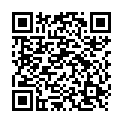|
|
|
| Module code: E416 |
|
2V (2 hours per week) |
|
2 |
| Semester: 4 |
| Mandatory course: yes |
Language of instruction:
German |
Assessment:
Written examination
[updated 11.03.2010]
|
E416 Electrical Engineering, Bachelor, ASPO 01.10.2005
, semester 4, mandatory course
|
30 class hours (= 22.5 clock hours) over a 15-week period.
The total student study time is 60 hours (equivalent to 2 ECTS credits).
There are therefore 37.5 hours available for class preparation and follow-up work and exam preparation.
|
Recommended prerequisites (modules):
None.
|
Recommended as prerequisite for:
|
Module coordinator:
Prof. Dr. Horst Wieker |
Lecturer:
Prof. Dr. Horst Wieker
Prof. Dr.-Ing. Wolfram Seibert
[updated 11.03.2010]
|
Learning outcomes:
After successfully completing this course, students will have acquired a basic appreciation of automotive engineering. Students will learn how a vehicle functions and how vehicle communications systems combine to achieve specific driving characteristics. They will have a basic understanding of key automotive subsystems: brakes, chassis and vehicle dynamics, and will be able to assess special functions such as ABS, ASR or ESP from an electrical engineering perspective.
[updated 11.03.2010]
|
Module content:
1.Chassis function
2.Vehicle dynamics
3.Friction coefficients (linear and lateral acceleration)
4.Brakes: electronic braking systems (ABS, ESP, ASR)
5.On-board communications networks (general purpose)
6.CAN Bus (diagnostics, infotainment, drive system, combination (control unit))
7.High-speed real-time bus (FlexRay)
8.Sub-bus (LIN)
9.Wireless (Bluetooth)
10.Driver assistance systems (adaptive course control, park distance control,
crash sensing (airbag..), blind spot detection, lane keeping, Rain sensor,
light sensor,infotainment (navigation systems, phone, HMI)
[updated 11.03.2010]
|
Teaching methods/Media:
Video projector, blackboard
[updated 11.03.2010]
|
Recommended or required reading:
Accompanying lecture notes
[updated 11.03.2010]
|


